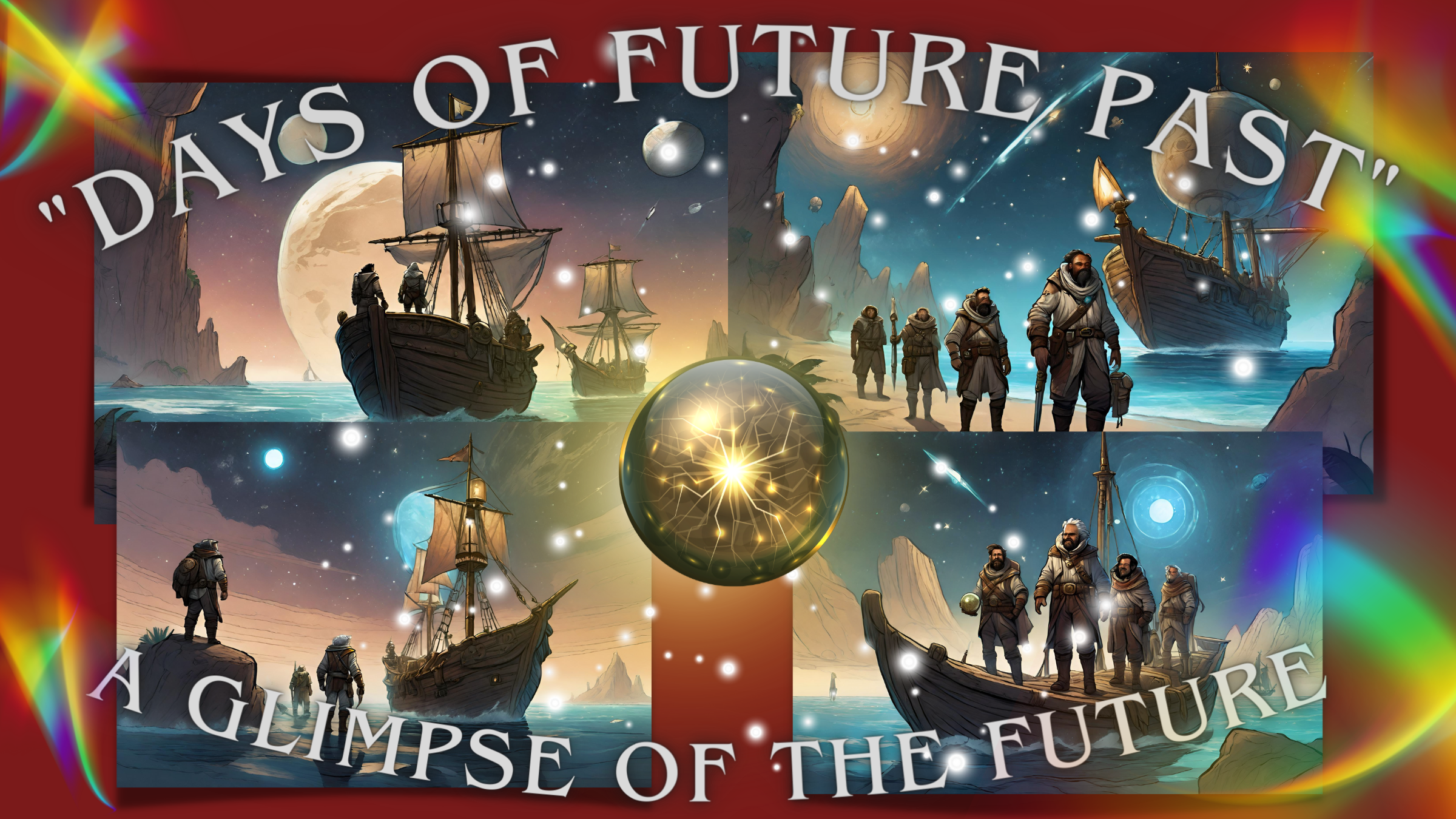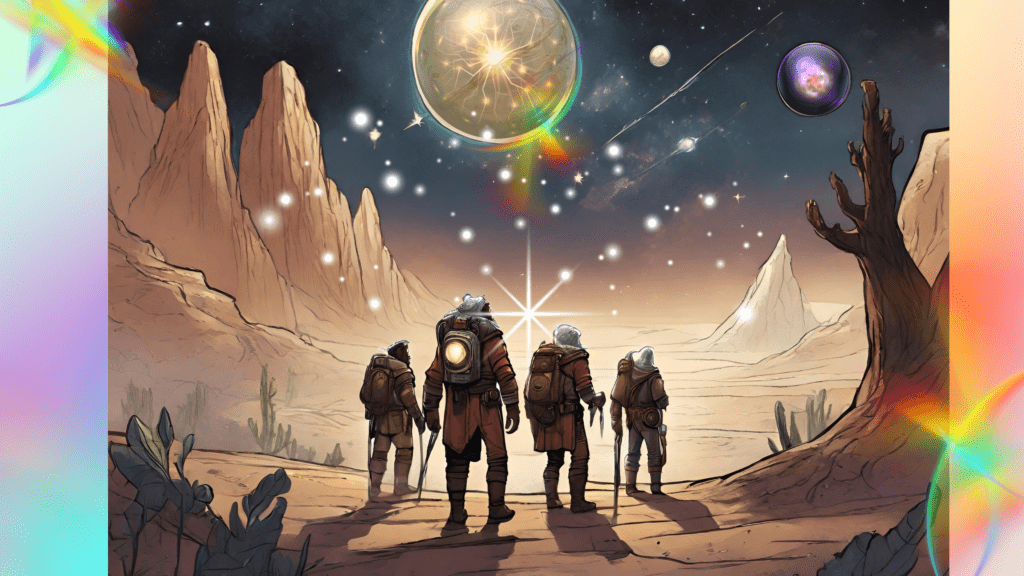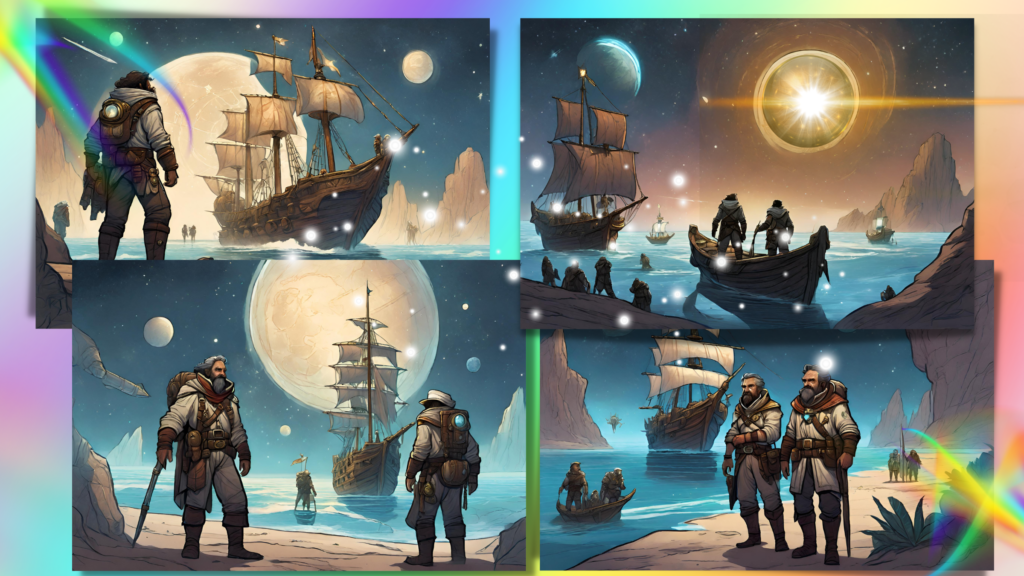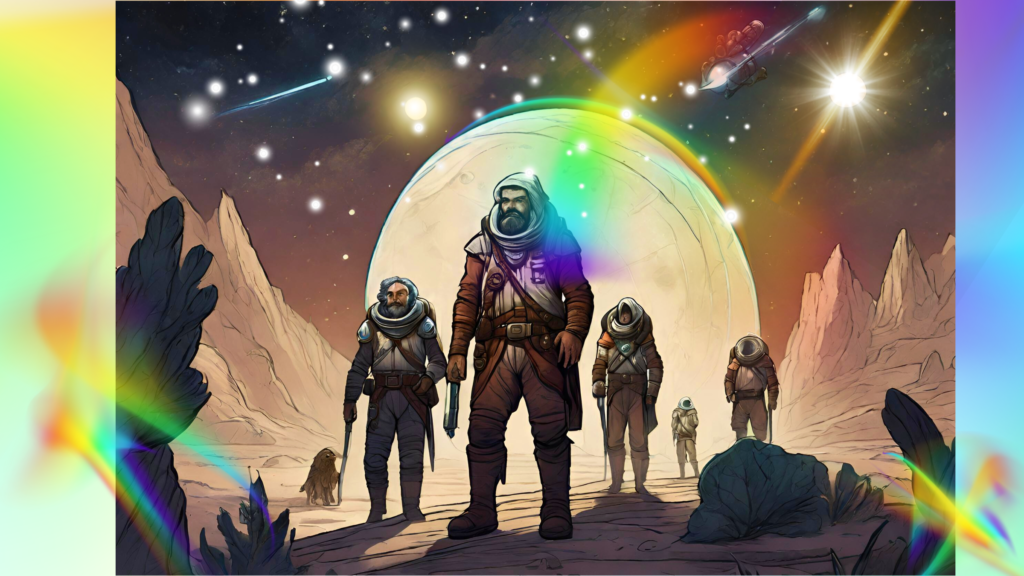
Note to the Reader:
This white paper series embarks on an expedition through the realms of cognitive psychology, the 10,000-hour concept, and the unique role of Marketing Diagnostic Experts. These three pillars intersect to unveil the intricate interplay between science and intuition in advertising, marketing, and communication. This document is divided into three distinct chapters, each shedding light on a fundamental aspect of this journey.
Part III: The World of Marketing Diagnostic Experts
The third pillar of this journey introduces us to a world of experts, the Marketing Diagnostic Experts who have honed their skills through decades of practice and understanding. We will uncover their secrets, exploring how their experiences have enabled them to offer invaluable guidance to those seeking excellence in marketing and communication.
In this 3-chapter white paper, we unveil the secrets held at the intersection of Diagnostic Decision Making, revealing a roadmap for those who aspire to excel in the ever-evolving field of marketing and communication. Welcome to a world where expertise is the ultimate currency, and Multimedia Marketing Group is your trusted guide on this transformative journey.
"Days of Future Past" A Glimpse of the Future
Chapter Three
In the not-so-distant future, the landscape of marketing and communication will find itself suspended at the precipice of transformation, akin to the unfolding chapters of “Days of Future Past.” Here, the delicate dance between data-driven precision and intuitive foresight gave rise to a paradigm shift, much like the X-Men saga’s alternate timelines. As brands and decision-makers embraced their roles as architects of this narrative, a symphony of insights intertwined with the artistry of expression, crafting a terrain where decisions were not merely made but meticulously orchestrated, and content wasn’t just delivered but lived through immersive experiences. This was the juncture where the present and the speculative future converged, inviting you, the reader on a journey into a dynamic and exciting realm where the tapestry of marketing and communication unfolded at the crossroads of technological marvels, ethical considerations, and the ever-evolving digital landscape.
The story that follows unfolds a tale where the future is not just a destination but a canvas waiting to be painted with the strokes of progress and connection.
The Future of Diagnostic Strategy in Marketing and Communication
As we gaze into the future, brands and decision-makers poised at the intersection of data and intuition, and content creators mindful of the blend of substance and style, are the architects of a new era. It’s a journey where the symphony of insights and the artistry of expression converge, shaping a landscape where decisions are not just made but crafted, and content is not just delivered but experienced.
This is where the confluence of data and intuition marked the genesis of a transformative era, the landscape of marketing and communication unfolded like a tapestry woven with threads of innovation and human connection. The protagonists of this narrative were not mere brands and decision-makers; they were architects of ‘experiences’, orchestrating a symphony where every note resonated with the pulse of a dynamic world.
As the digital horizon continued its relentless evolution, these architects stood at the crossroads, where the traditional met the avant-garde, and where decisions were not merely made but crafted with meticulous precision. In this unfolding saga, the fusion of insights and expression emerged as the guiding star, shaping a future where marketing and communication weren’t just functional endeavors but immersive journeys.

In the “Days of Future Past,” the realm of marketing and communication found itself at a new crossroad, where data and intuition met to craft an innovative era of decision-making. Brands and decision-makers, akin to explorers, embarked on a journey where the symphony of insights harmonized with the artistry of expression, forging a landscape where decisions were not merely made but meticulously crafted, and content wasn’t just delivered but lived through experiences.
As the digital horizon continued to shift and evolve, brands stood at the forefront, adapting and innovating ceaselessly. Success wasn’t just about keeping up; it was about staying ahead of the curve. To triumph, brands needed to embrace novel formats, engage with authenticity, and deliver content that resonated with the ever-changing needs and preferences of their audiences.
In this narrative, the future of content in marketing and communication wasn’t merely a narrative of what was said, but a tale of how it was said and the immersive experiences it created. Those who mastered these nuances were poised for success in the dynamic world of marketing and communication.
Driven by technological advancements, shifting consumer behaviors, and societal changes, the adventurers in this narrative were tasked with peering into the future of diagnostic strategy. It was a future intertwined with challenges and opportunities, beckoning them to adapt and thrive.

The storyline took a futuristic turn with the advent of augmented and virtual reality experiences. Augmented reality (AR) seamlessly merged digital information with the real world, offering interactive experiences, while virtual reality (VR) immersed users in entirely virtual realms. Marketers, in this narrative, utilized AR and VR to craft immersive and interactive content. Virtual clothing try-ons and virtual resort tours became commonplace, aiding consumers in decision-making processes.
Voice-activated digital assistants, such as Siri, Alexa, and Google Assistant, played a new pivotal role in the narrative’s unfolding. Voice search, projected as a dominant mode of interaction in the future, necessitated marketers to optimize their content accordingly. The shift toward conversational marketing strategies, tailoring content to natural language and conversational queries, became imperative for accessibility and engagement.
Sustainability and social responsibility emerged as protagonists in the storyline, playing an increasingly significant role in marketing and communication. Consumers, mindful of the societal and environmental impact of their choices, sought alignment with brands sharing their values. Marketers, in response, incorporated sustainability and social responsibility into their campaigns, recognizing the competitive advantage associated with ethical and sustainable practices.

The storyline culminated in the realm of data-driven storytelling and personalization. Marketers, armed with data insights, crafted narratives that resonated deeply with their target audiences. These narratives were not generic tales but highly personalized stories addressing individual needs and preferences. Every aspect of marketing, from product recommendations to email content, embraced personalization, recognizing that the more personal and relevant the message, the more effective it would be.
This story of our explorers paints a picture of a dynamic and exciting future. The landscape, shaped by technology, consumer values, and the ever-evolving digital environment, beckoned professionals to embrace innovation, ethical practices, and a profound understanding of the shifting needs and desires of consumers. The closing of the story hinted at a world where those who could adapt and leverage these trends would be well-positioned to thrive in the thrilling realm of marketing and communication.
Concluding Thoughts
Marketing and communication are not just about selling products or conveying messages; they are about connecting with people on a profound level. Embracing a multidisciplinary perspective enriches the strategies and campaigns created by professionals in these fields. It recognizes that the human experience is multidimensional, and marketing and communication should be equally diverse and adaptable. Human intuition plays a role in diagnostic decision-making by contributing to pattern recognition, rapid assessment, hypothesis generation, and creative problem-solving. When used judiciously and in conjunction with analytical methods, intuition can enhance the efficiency and effectiveness of the diagnostic process.
By drawing from the wellspring of insights offered by psychology, sociology, economics, design, data science, anthropology, and more, multidisciplinary experts create campaigns that resonate deeply with audiences, inspire action, and drive positive change. It is the tapestry of multidisciplinary perspectives that paints the most vibrant and resonant canvases in the ever-evolving world of marketing and communication.

About the White Paper Series
This white paper series has navigated the intricate landscape of marketing and communication, unveiling the symbiotic relationship between science and intuition. Through the exploration of cognitive psychology, the ten-thousand-hour principle, and the world of Marketing Diagnostic Experts, we’ve uncovered the foundations of success in this ever-evolving field. As we close this chapter, we leave you with a roadmap illuminated by the wisdom of those who have dedicated themselves to mastery. In a world where expertise is the ultimate currency, Multimedia Marketing Group stands as a beacon, offering guidance and insight. The journey does not end here; rather, it extends into the future, where the pursuit of excellence in marketing and communication continues to shape the narratives that captivate, resonate, and inspire. Welcome to a realm where the intersection of science and intuition is the key to transformative success.
As we draw the final curtain on this comprehensive white paper series, we find ourselves at the convergence of theory and practice, insight and application. The exploration of cognitive psychology has illuminated the intricate workings of the human mind, providing marketers with a profound understanding of how to connect with audiences on a deeper level. The ten-thousand-hour principle has underscored the importance of dedication, deliberate practice, and continuous learning in the pursuit of mastery. Real-world examples from Multimedia Marketing Group have vividly demonstrated that expertise is not an endpoint but a continuous journey.
In our journey through the world of Marketing Diagnostic Experts, we have encountered individuals whose decades-long commitment and wealth of experiences have crystallized into a unique skill set. These experts stand as living testaments to the power of melding scientific knowledge with intuitive understanding, navigating the nuanced challenges of marketing with precision and finesse.
As we conclude this series, we extend an invitation to embrace the roadmap laid out by these pillars—cognitive psychology, the ten-thousand-hour principle, and the insights of Marketing Diagnostic Experts. Multimedia Marketing Group, as a trusted guide, beckons you to a future where the pursuit of excellence is an ongoing narrative. The evolving landscape of marketing and communication awaits those who dare to venture into the intersection of science and intuition, where mastery is not just a goal but an unfolding story of perpetual growth. Welcome to a realm where expertise is not a destination but a dynamic journey shaping the narratives of tomorrow.
Bibliography and Further Reading:
These readings cover a range of topics related to decision-making, business intelligence, and data science in the context of marketing. Depending on your specific areas of interest, these resources can serve as a foundation for understanding and implementing diagnostic decision-making strategies.
- Simon, H. A. (1955). “A Behavioral Model of Rational Choice.” Quarterly Journal of Economics, 69(1), 99–118.
- Payne, J. W., Bettman, J. R., & Johnson, E. J. (1988). “Adaptive Strategy Selection in Decision Making.” Journal of Experimental Psychology: Learning, Memory, and Cognition, 14(3), 534–552.
- Kahneman, D., & Tversky, A. (1974). “Judgment under Uncertainty: Heuristics and Biases.” Science, 185(4157), 1124–1131.
- Davenport, T. H., Harris, J., & Shapiro, J. (2010). “Competing on Talent Analytics.” Harvard Business Review, 88(10), 52–58.
- Wixom, B. H., & Watson, H. J. (2011). “The BI-Based Organization.” MIS Quarterly Executive, 10(4), 199–212.
- Sharda, R., Delen, D., & Turban, E. (2017). “Business Intelligence: A Managerial Perspective on Analytics.” Pearson.
- Tung, L. L., & Rieck, J. R. (2005). “Proactive Marketing Decision Support Systems: The Role of the Environment.” Journal of Marketing Research, 42(2), 156–169.
- Provost, F., & Fawcett, T. (2013). “Data Science and Its Relationship to Big Data and Data-Driven Decision Making.” Big Data, 1(1), 51–59.
- Davenport, T. H., & Patil, D. J. (2012). “Data Scientist: The Sexiest Job of the 21st Century.” Harvard Business Review, 90(10), 70–76.
- Tashman, P. (2017). “The BI Survey 17: The World’s Largest Survey of Business Intelligence Software Users.” BARC.
- Davenport, T. H. (2006). “Competing on Analytics: The New Science of Winning.” Harvard Business School Press.
- Winston, W. L. (1998). “Data Analysis and Decision Making.” Duxbury Press.
- Goodwin, P., & Wright, G. (2004). “Decision Analysis for Management Judgment.” Wiley.
- Hastie, R., Dawes, R. M., & Mazzocco, K. (2008). “Psychological Heuristics and Biases: Why Aren’t We More Informative?” Psychological Review, 115(3), 678–680.
- Lohr, S. (2012). “The Age of Big Data.” The New York Times.
- McAfee, A., & Brynjolfsson, E. (2012). “Big Data: The Management Revolution.” Harvard Business Review, 90(10), 60–68.
- Provost, F., & Fawcett, T. (2013). “Data Science for Business: What You Need to Know about Data Mining and Data-Analytic Thinking.” O’Reilly Media.
- Witten, I. H., Frank, E., Hall, M. A., & Pal, C. J. (2016). “Data Mining: Practical Machine Learning Tools and Techniques.” Morgan Kaufmann.
- Kotler, P., & Keller, K. L. (2015). “Marketing Management.” Pearson.
- Berman, B. (2012). “Digital Transformation: Opportunities to Create New Business Models.” Strategy & Leadership, 40(2), 16–24.
These resources encompass a wide range of perspectives on decision-making, analytics, and the role of data in shaping business strategies. Whether you’re interested in practical applications, theoretical frameworks, or real-world case studies, these readings provide valuable insights into the intersection of marketing and data-driven decision-making.
Categories
Recent Posts
- Maximize Your Reach: Essential Email Marketing Dos and Don’ts for Success July 9, 2024
- Social Media Day 2024 June 30, 2024
- Navigating the World of Social Media Advertising June 20, 2024
- The Power of Visual Content in Marketing April 8, 2024
- Hip Hopper Alert: Easter Bunny Steals the Show with Sunglasses Stunt March 31, 2024
- The Super Bowl Ads 2024 February 12, 2024
- Serving Our Client’s Social Media Platforms Branded Content February 5, 2024
- Days of Future Past January 31, 2024
- The Art of Blending Human Intuition and Data-Driven Insights January 31, 2024
- Beyond Intuition January 30, 2024
Recent Comments